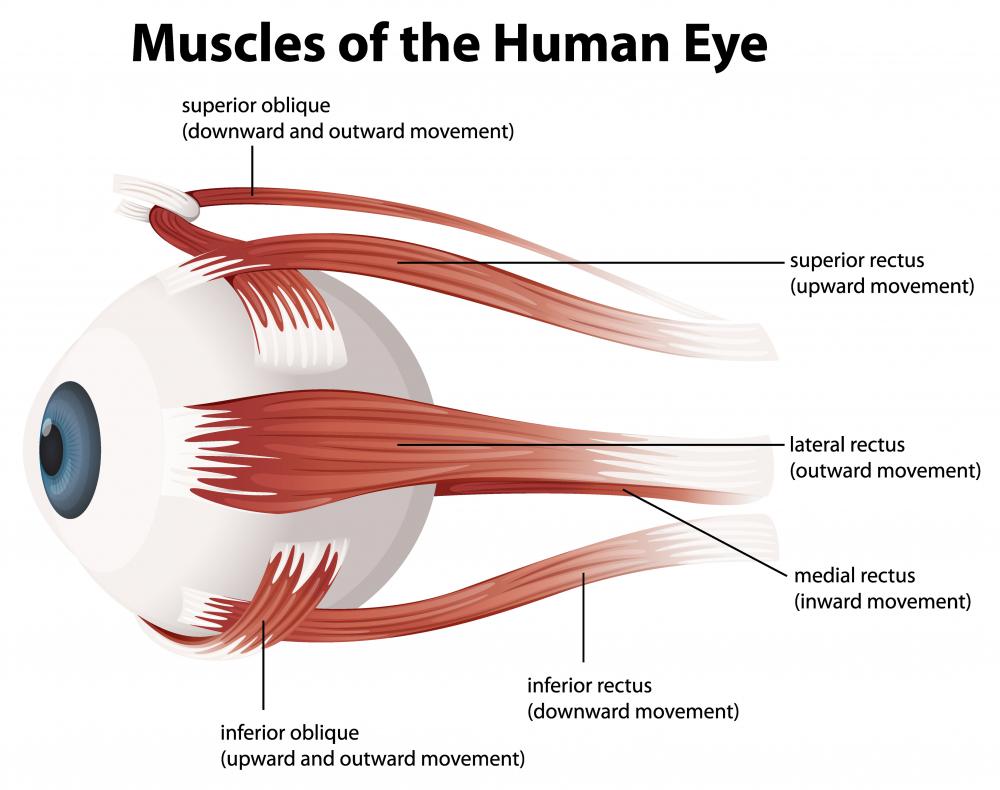At WiseGEEK, we're committed to delivering accurate, trustworthy information. Our expert-authored content is rigorously fact-checked and sourced from credible authorities. Discover how we uphold the highest standards in providing you with reliable knowledge.
What is an Oculogyric Crisis?
Oculogyric crisis is a clinical sign where a patient's eyeballs spasm and move into an extreme fixed position, often looking upwards or to the sides. The patient loses control over the eyes and may develop accompanying symptoms like drooling, a stiff neck, and psychological disturbance, depending on the underlying cause. Medications such as muscle relaxers can be administered to relax the muscles that control eye movement and allow the eyes to come to a more natural resting position.
This condition is an example of a dystonia, where abnormal muscle contractions cause painful spasms and unwanted movements. Patients with certain neurological disorders like Parkinson's disease can develop oculogyric crisis and it can also be seen as an adverse reaction to drugs, including both prescription medications and recreational substances. People subjected to extreme stress may also develop dystonias in some cases and stress is a known trigger for people with a history of oculogyric crisis.

The movements of the eyes can vary from patient to patient; they may roll apart, turn inwards, or more in other ways as the muscles around the eyeball spasm and undergo tension. An oculogyric crisis can be painful and uncomfortable for the patient. Once it resolves, the patient may exhibit signs of extreme fatigue and usually experiences relief from psychological symptoms like agitation and distress. Emotional distress or another exposure to drugs can cause the spasms to recur, triggering a new episode.

People around a patient may be disturbed or frightened by the fixed position of the eyes and the patient's obvious physical distress. Staying calm around the patient, using a neutral, soothing voice, and making it clear that help is on the way will help reduce the patient's stress and agitation, even if the patient cannot directly respond during the episode. Stress can prolong an episode of oculogyric crisis and may contribute to psychological symptoms like shouting or acting out.

When a patient's eyes appear to be moving abnormally or are fixed in a strained position, a doctor should be consulted if medical care is not already being provided. Dystonias can be a sign of a serious medical problem and prompt treatment may be needed. A doctor can examine the patient, take a history, and prescribe an appropriate treatment to resolve the crisis and make the patient more comfortable. Once the initial problem is addressed, long term treatment can be explored, such as switching a patient's medications to avoid dystonia triggers.
AS FEATURED ON:
AS FEATURED ON:

















Discuss this Article
Post your comments